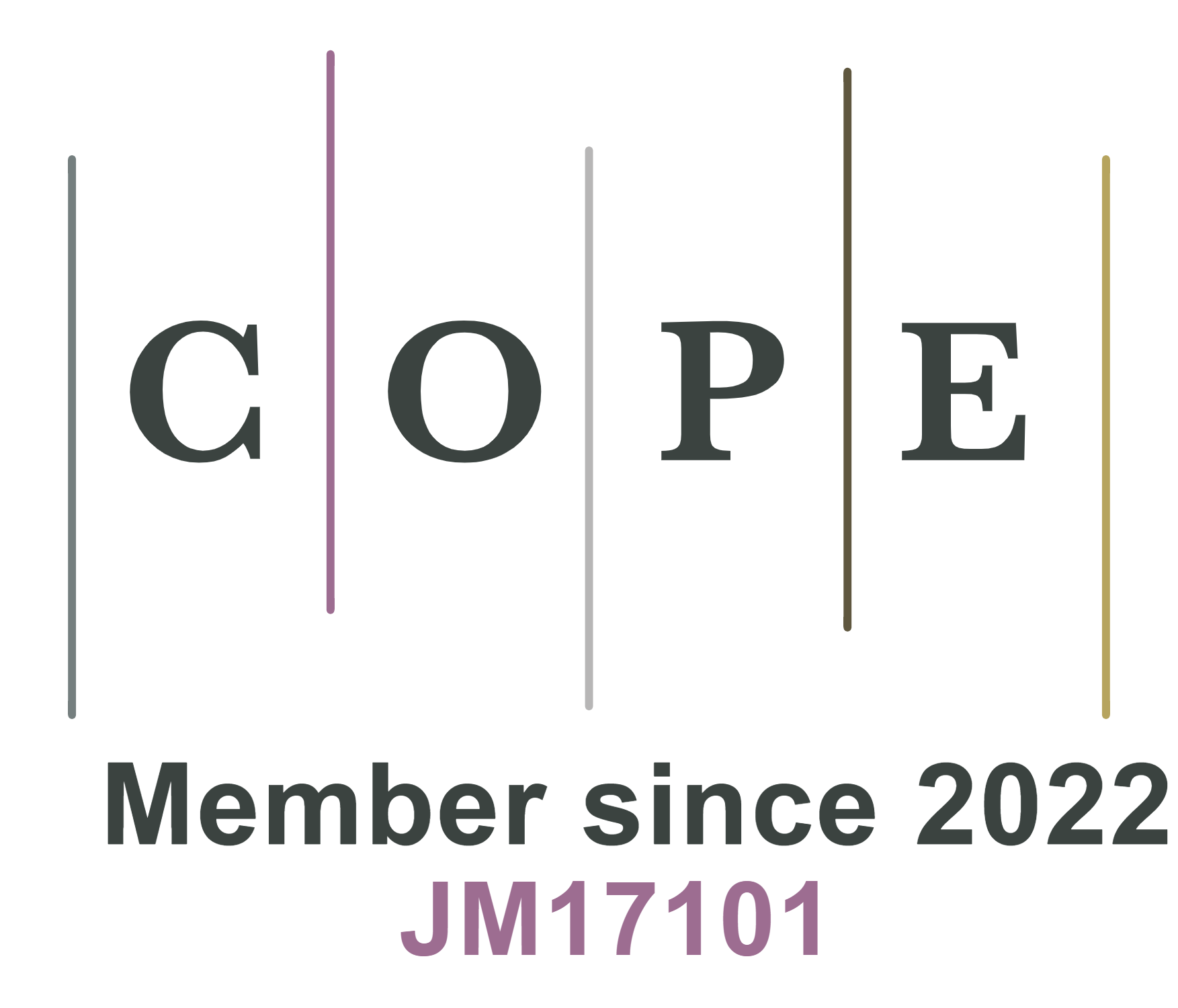REFERENCES
1. Scrosati B, Garche J. Lithium batteries: status, prospects and future. J Power Sources 2010;195:2419-30.
3. Passerini S, Scrosati B. Lithium and lithium-ion batteries: challenges and prospects. Electrochem Soc Interface 2016;25:85-7.
4. Kalhoff J, Eshetu GG, Bresser D, Passerini S. Safer electrolytes for lithium-ion batteries: state of the art and perspectives. ChemSusChem 2015;8:2154-75.
5. Chen Y, Kang Y, Zhao Y, et al. A review of lithium-ion battery safety concerns: the issues, strategies, and testing standards. J Energy Chem 2021;59:83-99.
6. Xu W, Wang J, Ding F, et al. Lithium metal anodes for rechargeable batteries. Energy Environ Sci 2014;7:513-37.
7. Wang H, Yu D, Kuang C, et al. Alkali metal anodes for rechargeable batteries. Chem 2019;5:313-38.
8. Adenusi H, Chass GA, Passerini S, Tian KV, Chen G. Lithium batteries and the solid electrolyte interphase (SEI) - progress and outlook. Adv Energy Mater 2023;13:2203307.
9. Jha V, Krishnamurthy B. Modeling the SEI layer formation and its growth in lithium-ion batteries (LiB) during charge-discharge cycling. Ionics 2022;28:3661-70.
10. Lewis JA, Tippens J, Cortes FJQ, Mcdowell MT. Chemo-mechanical challenges in solid-state batteries. Trends Chem 2019;1:845-57.
11. Donato G, Ates T, Adenusi H, Varzi A, Navarra MA, Passerini S. Electrolyte measures to prevent polysulfide shuttle in lithium-sulfur batteries. Batteries Supercaps 2022;5:e202200097-121.
12. Fergus JW. Ceramic and polymeric solid electrolytes for lithium-ion batteries. J Power Sources 2010;195:4554-69.
13. Sashmitha K, Rani MU. A comprehensive review of polymer electrolyte for lithium-ion battery. Polym Bull 2023;80:89-135.
14. Mindemark J, Lacey MJ, Bowden T, Brandell D. Beyond PEO - alternative host materials for Li+-conducting solid polymer electrolytes. Prog Polym Sci 2018;81:114-43.
15. Alexander GV, Patra S, Sobhan Raj SV, Sugumar MK, Ud Din MM, Murugan R. Electrodes-electrolyte interfacial engineering for realizing room temperature lithium metal battery based on garnet structured solid fast Li+ conductors. J Power Sources 2018;396:764-73.
16. Chen R, Nolan AM, Lu J, et al. The thermal stability of lithium solid electrolytes with metallic lithium. Joule 2020;4:812-21.
17. Schwietert TK, Vasileiadis A, Wagemaker M. First-principles prediction of the electrochemical stability and reaction mechanisms of solid-state electrolytes. JACS Au 2021;1:1488-96.
18. Manthiram A, Yu X, Wang S. Lithium battery chemistries enabled by solid-state electrolytes. Nat Rev Mater 2017;2:16103.
19. Wei R, Chen S, Gao T, Liu W. Challenges, fabrications and horizons of oxide solid electrolytes for solid-state lithium batteries. Nano Select 2021;2:2256-74.
20. Zhao Q, Stalin S, Zhao C, Archer LA. Designing solid-state electrolytes for safe, energy-dense batteries. Nat Rev Mater 2020;5:229-52.
21. Gurung A, Pokharel J, Baniya A, et al. A review on strategies addressing interface incompatibilities in inorganic all-solid-state lithium batteries. Sustain Energy Fuels 2019;3:3279-309.
22. Fan L, Wei S, Li S, Li Q, Lu Y. Recent progress of the solid-state electrolytes for high-energy metal-based batteries. Adv Energy Mater 2018;8:1702657.
23. Lu J, Li Y. Perovskite-type Li-ion solid electrolytes: a review. J Mater Sci Mater Electron 2021;32:9736-54.
24. Ramakumar S, Deviannapoorani C, Dhivya L, Shankar LS, Murugan R. Lithium garnets: synthesis, structure, Li+ conductivity, Li+ dynamics and applications. Prog Mater Sci 2017;88:325-411.
25. Wang P, Qu W, Song W, Chen H, Chen R, Fang D. Electro-Chemo-Mechanical issues at the interfaces in solid-state lithium metal batteries. Adv Funct Mater 2019;29:1900950-79.
26. Lim H, Park J, Shin H, et al. A review of challenges and issues concerning interfaces for all-solid-state batteries. Energy Stor Mater 2020;25:224-50.
27. Tsurumaki A, Ohno H. Dissolution of oligo(tetrafluoroethylene) and preparation of poly(tetrafluoroethylene)-based composites by using fluorinated ionic liquids. Chem Commun 2018;54:409-12.
28. Kalhoff J, Kim G, Passerini S, Appetecchi GB. Safety assessment of ionic liquid-based lithium-ion battery prototypes. J Energy Power Eng 2016;04:9-18.
29. Shin J. Ionic liquids to the rescue? overcoming the ionic conductivity limitations of polymer electrolytes. Electrochem Commun 2003;5:1016-20.
30. Tian L, Wang M, Liu Y, et al. Multiple ionic conduction highways and good interfacial stability of ionic liquid-encapsulated cross-linked polymer electrolytes for lithium metal batteries. J Power Sources 2022;543:231848.
31. Eshetu G, Armand M, Scrosati B, Passerini S. Energy storage materials synthesized from ionic liquids. Angew Chem Int Ed 2014;53:13342-59.
32. Osada I, de Vries H, Scrosati B, Passerini S. Ionic-liquid-based polymer electrolytes for battery applications. Angew Chem Int Ed 2016;55:500-13.
33. Ito S, Unemoto A, Ogawa H, Tomai T, Honma I. Application of quasi-solid-state silica nanoparticles-ionic liquid composite electrolytes to all-solid-state lithium secondary battery. J Power Sources 2012;208:271-5.
34. Wen Z, Li Y, Zhao Z, et al. A leaf-like Al2O3-based quasi-solid electrolyte with a fast Li+ conductive interface for stable lithium metal anodes. J Mater Chem A 2020;8:7280-7.
35. Liu S, Liu W, Ba D, et al. Filler-integrated composite polymer electrolyte for solid-state lithium batteries. Adv Mater 2023;35:e2110423.
36. Huy VP, So S, Hur J. Inorganic fillers in composite gel polymer electrolytes for high-performance lithium and non-lithium polymer batteries. Nanomaterials 2021;11:614.
37. Chen R, Li Q, Yu X, Chen L, Li H. Approaching practically accessible solid-state batteries: stability issues related to solid electrolytes and interfaces. Chem Rev 2020;120:6820-77.
41. Wang C, Fu K, Kammampata SP, et al. Garnet-type solid-state electrolytes: materials, interfaces, and batteries. Chem Rev 2020;120:4257-300.
42. Goodenough J, Hong H, Kafalas J. Fast Na+-ion transport in skeleton structures. Mater Res Bull 1976;11:203-20.
43. Wells AF. Structural inorganic chemistry, 4th ed. Oxford: Clarendon Press; 1975.
44. Thangadurai V, Weppner W. Li6ALa2Ta2O12 (A = Ca, Sr, Ba): A new class of fast lithium ion conductors with garnet-like structure. J Am Ceram Soc 2005;88:411-8.
45. Thangadurai V, Weppner W. Li6ALa2Ta2O12 (A = Sr, Ba): novel Garnet-like oxides for fast lithium ion conduction. Adv Funct Mater 2005;15:107-12.
46. Thangadurai V, Narayanan S, Pinzaru D. Garnet-type solid-state fast Li ion conductors for Li batteries: critical review. Chem Soc Rev 2014;43:4714-27.
47. Murugan R, Thangadurai V, Weppner W. Fast lithium ion conduction in garnet-type Li7La3Zr2O12. Angew Chem Int Ed 2007;46:7778-81.
48. Wang W, Wang X, Gao Y, Fang Q. Lithium-ionic diffusion and electrical conduction in the Li7La3Ta2O13 compounds. Solid State Ion 2009;180:1252-6.
49. Mariappan CR, Gnanasekar KI, Jayaraman V, Gnanasekaran T. Lithium ion conduction in Li5La3Ta2O12 and Li7La3Ta2O13 garnet-type materials. J Electroceram 2013;30:258-65.
50. Cussen EJ. The structure of lithium garnets: cation disorder and clustering in a new family of fast Li+ conductors. Chem Commun 2006:412-3.
51. Wu JF, Pang WK, Peterson VK, Wei L, Guo X. Garnet-type fast Li-ion conductors with high ionic conductivities for all-solid-state batteries. ACS Appl Mater Interfaces 2017;9:12461-8.
52. Xia W, Xu B, Duan H, et al. Ionic conductivity and air stability of Al-doped Li7La3Zr2O12 sintered in alumina and Pt crucibles. ACS Appl Mater Interfaces 2016;8:5335-42.
53. Sharafi A, Yu S, Naguib M, et al. Impact of air exposure and surface chemistry on Li-Li7La3Zr2O12 interfacial resistance. J Mater Chem A 2017;5:13475-87.
54. Sun Y, Guan P, Liu Y, Xu H, Li S, Chu D. Recent progress in lithium lanthanum titanate electrolyte towards all solid-state lithium ion secondary battery. Crit Rev Solid State 2019;44:265-82.
55. Stramare S, Thangadurai V, Weppner W. Lithium lanthanum titanates: a review. Chem Mater 2003;15:3974-90.
56. Inaguma Y, Liquan C, Itoh M, et al. High ionic conductivity in lithium lanthanum titanate. Solid State Commun 1993;86:689-93.
57. Yan S, Yim C, Pankov V, et al. Perovskite solid-state electrolytes for lithium metal batteries. Batteries 2021;7:75.
58. Chen C. Ionic conductivity, lithium insertion and extraction of lanthanum lithium titanate. Solid State Ion 2001;144:51-7.
59. Hong H. Crystal structure and ionic conductivity of Li14Zn(GeO4)4 and other new Li+ superionic conductors. Mater Res Bull 1978;13:117-24.
61. Shannon R, Taylor B, English A, Berzins T. New Li solid electrolytes. Electrochim Acta 1977;22:783-96.
62. Hu Y, Raistrick ID, Huggins RA. Ionic conductivity of lithium orthosilicate - lithium phosphate solid solutions. J Electrochem Soc 1977;124:1240-2.
63. Lau J, Deblock RH, Butts DM, Ashby DS, Choi CS, Dunn BS. Sulfide solid electrolytes for lithium battery applications. Adv Energy Mater 2018;8:1800933.
64. Yu X, Bates JB, Jellison GE, Hart FX. A stable thin-film lithium electrolyte: lithium phosphorus oxynitride. J Electrochem Soc 1997;144:524-32.
65. Oudenhoven JFM, Baggetto L, Notten PHL. All-solid-state lithium-ion microbatteries: a review of various three-dimensional concepts. Adv Energy Mater 2011;1:10-33.
66. Nowak S, Berkemeier F, Schmitz G. Ultra-thin LiPON films - fundamental properties and application in solid state thin film model batteries. J Power Sources 2015;275:144-50.
67. Bates J, Dudney N, Gruzalski G, et al. Fabrication and characterization of amorphous lithium electrolyte thin films and rechargeable thin-film batteries. J Power Sources 1993;43:103-10.
68. Cheng D, Wynn TA, Wang X, et al. Unveiling the stable nature of the solid electrolyte interphase between lithium metal and LiPON via cryogenic electron microscopy. Joule 2020;4:2484-500.
69. López-aranguren P, Reynaud M, Głuchowski P, et al. Crystalline LiPON as a bulk-type solid electrolyte. ACS Energy Lett 2021;6:445-50.
70. Zhang X, Temeche E, Laine RM. Design, synthesis, and characterization of polymer precursors to Li
71. Lee S, Bae J, Lee H, Baik H, Lee S. Electrical conductivity in Li-Si-P-O-N oxynitride thin-films. J Power Sources 2003;123:61-4.
72. Su Y, Falgenhauer J, Leichtweiß T, et al. Electrochemical properties and optical transmission of high Li+ conducting LiSiPON electrolyte films: electrochemical properties of high Li+ conducting LiSiPON electrolyte films. Phys Status Solidi B 2017;254:1600088.
73. Wang W, Jiang B, Hu L, Jiao S. Nasicon material NaZr2(PO4)3: a novel storage material for sodium-ion batteries. J Mater Chem A 2014;2:1341-5.
74. Zhao D, Xie Z, Hu J, et al. Structure determination, electronic and optical properties of NaGe2P3O12 and Cs2GeP4O13. J Molecular Struct 2009;922:127-34.
75. Ortiz-mosquera JF, Nieto-muñoz AM, Rodrigues AC. Precursor glass stability, microstructure and ionic conductivity of glass-ceramics from the Na1+xAlxGe2-x(PO4)3 NASICON series. J Non-Cryst Solids 2019;513:36-43.
76. Wu M, Ni W, Hu J, Ma J. NASICON-structured NaTi2(PO4)3 for sustainable energy storage. Nano-Micro Lett 2019;11:44.
77. Bachman JC, Muy S, Grimaud A, et al. Inorganic solid-state electrolytes for lithium batteries: mechanisms and properties governing ion conduction. Chem Rev 2016;116:140-62.
78. Tan G, Wu F, Li L, Liu Y, Chen R. Magnetron sputtering preparation of nitrogen-incorporated lithium-aluminum-titanium phosphate based thin film electrolytes for all-solid-state lithium ion batteries. J Phys Chem C 2012;116:3817-26.
79. Illbeigi M, Fazlali A, Kazazi M, Mohammadi AH. Effect of simultaneous addition of aluminum and chromium on the lithium ionic conductivity of LiGe2(PO4)3 NASICON-type glass-ceramics. Solid State Ion 2016;289:180-7.
81. Mo Y, Ong SP, Ceder G. First principles study of the Li10GeP2S12 lithium super ionic conductor material. Chem Mater 2012;24:15-7.
82. Adams S, Prasada Rao R. Structural requirements for fast lithium ion migration in Li10GeP2S12. J Mater Chem 2012;22:7687.
83. Hu C, Wang Z, Sun Z, Ouyang C. Insights into structural stability and Li superionic conductivity of Li10GeP2S12 from first-principles calculations. Chem Phys Lett 2014;591:16-20.
84. Chen S, Xie D, Liu G, et al. Sulfide solid electrolytes for all-solid-state lithium batteries: structure, conductivity, stability and application. Energy Stor Mater 2018;14:58-74.
85. Dietrich C, Weber DA, Sedlmaier SJ, et al. Lithium ion conductivity in Li2S-P2S5 glasses - building units and local structure evolution during the crystallization of superionic conductors Li3PS4, Li7P3S11 and Li4P2S7. J Mater Chem A 2017;5:18111-9.
86. Wang G, Lin C, Gao C, et al. Hydrolysis-resistant and anti-dendritic halide composite Li3PS4-LiI solid electrolyte for all-solid-state lithium batteries. Electrochim Acta 2022;428:140906.
87. Calpa M, Rosero-navarro NC, Miura A, Jalem R, Tateyama Y, Tadanaga K. Chemical stability of Li4PS4I solid electrolyte against hydrolysis. Appl Mater Today 2021;22:100918.
88. Rao RP, Adams S. Studies of lithium argyrodite solid electrolytes for all-solid-state batteries: studies of lithium argyrodite solid electrolytes. Phys Status Solidi A 2011;208:1804-7.
89. Boulineau S, Courty M, Tarascon J, Viallet V. Mechanochemical synthesis of Li-argyrodite Li6PS5X (X = Cl, Br, I) as sulfur-based solid electrolytes for all solid state batteries application. Solid State Ion 2012;221:1-5.
90. Deiseroth H, Maier J, Weichert K, Nickel V, Kong S, Reiner C. Li7PS6 and Li6PS5X (X: Cl, Br, I): possible three-dimensional diffusion pathways for lithium ions and temperature dependence of the ionic conductivity by impedance measurements. Z Anorg Allg Chem 2011;637:1287-94.
91. Deiseroth HJ, Kong ST, Eckert H, et al. Li6PS5X: a class of crystalline Li-rich solids with an unusually high Li+ mobility. Angew Chem Int Ed 2008;47:755-8.
92. Zhu Y, He X, Mo Y. First principles study on electrochemical and chemical stability of solid electrolyte-electrode interfaces in all-solid-state Li-ion batteries. J Mater Chem A 2016;4:3253-66.
93. Wang S, Wu Y, Ma T, Chen L, Li H, Wu F. Thermal stability between sulfide solid electrolytes and oxide cathode. ACS Nano 2022;16:16158-76.
94. Paul PP, Chen B, Langevin SA, Dufek EJ, Nelson Weker J, Ko JS. Interfaces in all solid state Li-metal batteries: a review on instabilities, stabilization strategies, and scalability. Energy Stor Mater 2022;45:969-1001.
95. Pervez SA, Cambaz MA, Thangadurai V, Fichtner M. Interface in solid-state lithium battery: challenges, progress, and outlook. ACS Appl Mater Interfaces 2019;11:22029-50.
97. Banerjee A, Wang X, Fang C, Wu EA, Meng YS. Interfaces and interphases in all-solid-state batteries with inorganic solid electrolytes. Chem Rev 2020;120:6878-933.
98. Wenzel S, Leichtweiss T, Krüger D, Sann J, Janek J. Interphase formation on lithium solid electrolytes - an
99. Zhu Y, He X, Mo Y. Origin of outstanding stability in the lithium solid electrolyte materials: insights from thermodynamic analyses based on first-principles calculations. ACS Appl Mater Interfaces 2015;7:23685-93.
100. Wenzel S, Weber DA, Leichtweiss T, Busche MR, Sann J, Janek J. Interphase formation and degradation of charge transfer kinetics between a lithium metal anode and highly crystalline Li7P3S11 solid electrolyte. Solid State Ion 2016;286:24-33.
101. Wenzel S, Randau S, Leichtweiß T, et al. Direct observation of the interfacial instability of the fast ionic conductor Li10GeP2S12 at the lithium metal anode. Chem Mater 2016;28:2400-7.
102. Cheng L, Crumlin EJ, Chen W, et al. The origin of high electrolyte-electrode interfacial resistances in lithium cells containing garnet type solid electrolytes. Phys Chem Chem Phys 2014;16:18294-300.
103. Aatiq A, Ménétrier M, Croguennec L, Suard E, Delmas C. On the structure of Li3Ti2(PO4)3. J Mater Chem 2002;12:2971-8.
104. Ma C, Cheng Y, Yin K, et al. Interfacial stability of Li metal-solid electrolyte elucidated via
105. Zhu Y, Connell JG, Tepavcevic S, et al. Dopant-dependent stability of garnet solid electrolyte interfaces with lithium metal. Adv Energy Mater 2019;9:1803440.
106. Hartmann P, Leichtweiss T, Busche MR, et al. Degradation of NASICON-type materials in contact with lithium metal: formation of mixed conducting interphases (MCI) on solid electrolytes. J Phys Chem C 2013;117:21064-74.
107. Tolganbek N, Serikkazyyeva A, Kalybekkyzy S, et al. Interface modification of NASICON-type Li-ion conducting ceramic electrolytes: a critical evaluation. Mater Adv 2022;3:3055-69.
108. Schwöbel A, Hausbrand R, Jaegermann W. Interface reactions between LiPON and lithium studied by
109. Han X, Gong Y, Fu KK, et al. Negating interfacial impedance in garnet-based solid-state Li metal batteries. Nat Mater 2017;16:572-9.
110. Sharafi A, Kazyak E, Davis AL, et al. Surface chemistry mechanism of ultra-low interfacial resistance in the solid-state electrolyte
111. Krauskopf T, Hartmann H, Zeier WG, Janek J. Toward a fundamental understanding of the lithium metal anode in solid-state batteries-an electrochemo-mechanical study on the garnet-type solid electrolyte Li6.25Al0.25La3Zr2O12. ACS Appl Mater Interfaces 2019;11:14463-77.
112. Liu T, Zhang Y, Chen R, et al. Non-successive degradation in bulk-type all-solid-state lithium battery with rigid interfacial contact. Electrochem Commun 2017;79:1-4.
113. Zhu J, Zhao J, Xiang Y, et al. Chemomechanical failure mechanism study in NASICON-type Li1.3Al0.3Ti1.7(PO4)3 solid-state lithium batteries. Chem Mater 2020;32:4998-5008.
114. Lee C, Han SY, Lewis JA, et al. Stack pressure measurements to probe the evolution of the lithium-solid-state electrolyte interface. ACS Energy Lett 2021;6:3261-9.
115. Tippens J, Miers JC, Afshar A, et al. Visualizing chemomechanical degradation of a solid-state battery electrolyte. ACS Energy Lett 2019;4:1475-83.
116. Yuan C, Lu W, Xu J. Unlocking the electrochemical-mechanical coupling behaviors of dendrite growth and crack propagation in all-solid-state batteries. Adv Energy Mater 2021;11:2101807.
117. Xu X, Liu Y, Kapitanova OO, Song Z, Sun J, Xiong S. Electro-Chemo-Mechanical failure of solid electrolytes induced by growth of internal lithium filaments. Adv Mater 2022;34:e2207232.
118. Cao D, Sun X, Li Q, Natan A, Xiang P, Zhu H. Lithium dendrite in all-solid-state batteries: growth mechanisms, suppression strategies, and characterizations. Matter 2020;3:57-94.
119. Monroe C, Newman J. The impact of elastic deformation on deposition kinetics at lithium/polymer interfaces. J Electrochem Soc 2005;152:A396.
120. Tsai CL, Roddatis V, Chandran CV, et al. Li7La3Zr2O12 interface modification for Li dendrite prevention. ACS Appl Mater Interfaces 2016;8:10617-26.
121. Xu B, Li W, Duan H, et al. Li3PO4-added garnet-type Li6.5La3Zr1.5Ta0.5O12 for Li-dendrite suppression. J Power Sources 2017;354:68-73.
122. Porz L, Swamy T, Sheldon BW, et al. Mechanism of lithium metal penetration through inorganic solid electrolytes. Adv Energy Mater 2017;7:1701003.
123. Shen F, Dixit MB, Xiao X, Hatzell KB. Effect of pore connectivity on Li dendrite propagation within LLZO electrolytes observed with synchrotron X-ray tomography. ACS Energy Lett 2018;3:1056-61.
124. Cheng EJ, Sharafi A, Sakamoto J. Intergranular Li metal propagation through polycrystalline Li6.25Al0.25La3Zr2O12 ceramic electrolyte. Electrochim Acta 2017;223:85-91.
125. Zheng C, Ruan Y, Su J, et al. Grain boundary modification in garnet electrolyte to suppress lithium dendrite growth. Chem Eng J 2021;411:128508.
126. Han F, Westover AS, Yue J, et al. High electronic conductivity as the origin of lithium dendrite formation within solid electrolytes. Nat Energy 2019;4:187-96.
127. Ping W, Wang C, Lin Z, et al. Reversible short-circuit behaviors in garnet-based solid-state batteries. Adv Energy Mater 2020;10:2000702.
128. Biao J, Han B, Cao Y, et al. Inhibiting formation and reduction of Li2CO3 to LiCx at grain boundaries in garnet electrolytes to prevent Li penetration. Adv Mater 2023;35:e2208951.
129. Huang X, Lu Y, Guo H, et al. None-mother-powder method to prepare dense Li-garnet solid electrolytes with high critical current density. ACS Appl Energy Mater 2018;1:5355-65.
130. Kazyak E, Garcia-mendez R, Lepage WS, et al. Li penetration in ceramic solid electrolytes: operando microscopy analysis of morphology, propagation, and reversibility. Matter 2020;2:1025-48.
131. Westover AS, Dudney NJ, Sacci RL, Kalnaus S. Deposition and confinement of Li metal along an artificial lipon-lipon interface. ACS Energy Lett 2019;4:651-5.
132. Lu Y, Tu Z, Archer LA. Stable lithium electrodeposition in liquid and nanoporous solid electrolytes. Nat Mater 2014;13:961-9.
133. Lv Y, Xiao Y, Ma L, Zhi C, Chen S. Recent advances in electrolytes for “beyond aqueous” zinc-ion batteries. Adv Mater 2022;34:e2106409.
134. Judez X, Martinez-ibañez M, Santiago A, Armand M, Zhang H, Li C. Quasi-solid-state electrolytes for lithium sulfur batteries: advances and perspectives. J Power Sources 2019;438:226985.
135. Busche MR, Drossel T, Leichtweiss T, et al. Dynamic formation of a solid-liquid electrolyte interphase and its consequences for hybrid-battery concepts. Nat Chem 2016;8:426-34.
136. Wang Q, Jin J, Wu X, Ma G, Yang J, Wen Z. A shuttle effect free lithium sulfur battery based on a hybrid electrolyte. Phys Chem Chem Phys 2014;16:21225-9.
137. Xu B, Duan H, Liu H, Wang CA, Zhong S. Stabilization of garnet/liquid electrolyte interface using superbase additives for hybrid Li batteries. ACS Appl Mater Interfaces 2017;9:21077-82.
138. Zhou H, Liu H, Li Y, et al.
139. Wang C, Sun Q, Liu Y, et al. Boosting the performance of lithium batteries with solid-liquid hybrid electrolytes: interfacial properties and effects of liquid electrolytes. Nano Energy 2018;48:35-43.
140. Nikodimos Y, Su W, Taklu BW, et al. Resolving anodic and cathodic interface-incompatibility in solid-state lithium metal battery via interface infiltration of designed liquid electrolytes. J Power Sources 2022;535:231425.
141. Yan S, Abouali S, Yim C, et al. Revealing the role of liquid electrolytes in cycling of garnet-based solid-state lithium-metal batteries. J Phys Chem C 2022;126:14027-35.
142. Tang J, Wang L, You L, et al. Effect of organic electrolyte on the performance of solid electrolyte for solid-liquid hybrid lithium batteries. ACS Appl Mater Interfaces 2021;13:2685-93.
143. Li J, Li F, Zhang L, Zhang H, Lassi U, Ji X. Recent applications of ionic liquids in quasi-solid-state lithium metal batteries. Green Chem Eng 2021;2:253-65.
144. Armand M, Endres F, MacFarlane DR, Ohno H, Scrosati B. Ionic-liquid materials for the electrochemical challenges of the future. Nat Mater 2009;8:621-9.
145. Kim HW, Manikandan P, Lim YJ, Kim JH, Nam SC, Kim Y. Hybrid solid electrolyte with the combination of Li7La3Zr2O12 ceramic and ionic liquid for high voltage pseudo-solid-state Li-ion batteries. J Mater Chem A 2016;4:17025-32.
146. Tsurumaki A, Rettaroli R, Mazzapioda L, Navarra MA. Inorganic-organic hybrid electrolytes based on Al-doped Li7La3Zr2O12 and ionic liquids. Appl Sci 2022;12:7318.
147. Zhang Z, Zhang L, Liu Y, et al. Interface-engineered Li7La3Zr2O12-based garnet solid electrolytes with suppressed Li-dendrite formation and enhanced electrochemical performance. ChemSusChem 2018;11:3774-82.
148. Xiong S, Liu Y, Jankowski P, et al. Design of a multifunctional interlayer for NASCION-based solid-state Li metal batteries. Adv Funct Mater 2020;30:2001444.
149. Basile A, Bhatt AI, O’Mullane AP. Stabilizing lithium metal using ionic liquids for long-lived batteries. Nat Commun 2016;7:ncomms11794.
150. Pervez SA, Kim G, Vinayan BP, et al. Overcoming the interfacial limitations imposed by the solid-solid interface in solid-state batteries using ionic liquid-based interlayers. Small 2020;16:e2000279.
151. Cao Y, Zuo P, Lou S, et al. A quasi-solid-state Li-S battery with high energy density, superior stability and safety. J Mater Chem A 2019;7:6533-42.
152. Zheng B, Zhu J, Wang H, et al. Stabilizing Li10SnP2S12/Li interface via an
153. Fuchs T, Mogwitz B, Otto S, Passerini S, Richter FH, Janek J. Working Principle of an ionic liquid interlayer during pressureless lithium stripping on Li6.25Al0.25La3Zr2O12 (LLZO) garnet-type solid electrolyte. Batteries Supercaps 2021;4:1145-55.
154. Liu B, Gong Y, Fu K, et al. Garnet solid electrolyte protected Li-metal batteries. ACS Appl Mater Interfaces 2017;9:18809-15.
155. Yang G, Song Y, Wang Q, Zhang L, Deng L. Review of ionic liquids containing, polymer/inorganic hybrid electrolytes for lithium metal batteries. Mater Des 2020;190:108563.
156. Fei H, Han J, Passerini S, Varzi A. Hybrid organic/inorganic interphase for stabilizing a zinc metal anode in a mild aqueous electrolyte. ACS Appl Mater Interfaces 2022;14:48675-81.
157. Huo H, Zhao N, Sun J, Du F, Li Y, Guo X. Composite electrolytes of polyethylene oxides/garnets interfacially wetted by ionic liquid for room-temperature solid-state lithium battery. J Power Sources 2017;372:1-7.
158. Wu F, Fang S, Kuenzel M, et al. Bilayer solid electrolyte enabling quasi-solid-state lithium-metal batteries. J Power Sources 2023;557:232514.
159. Zheng J, Hu YY. New insights into the compositional dependence of Li-ion transport in polymer-ceramic composite electrolytes. ACS Appl Mater Interfaces 2018;10:4113-20.
160. Chen Z, Stepien D, Wu F, et al. Stabilizing the Li1.3Al0.3Ti1.7(PO4)3|Li interface for high efficiency and long lifespan quasi-solid-state lithium metal batteries. ChemSusChem 2022;15:e202200038.










